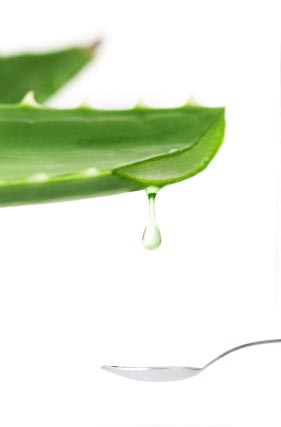Local Storage seems to be disabled in your browser.
For the best experience on our site, be sure to turn on Local Storage in your browser.
Properties of Aloe Vera


It is one of the 250 known species of aloe. It can be found in desert or semi-desert regions, although it is best grown in mild climates where there is few rain, as in Canary Islands.
The plant is formed by a variable group of leaves stemming from a trunk that is also considered the main root. From it twice or thrice a year a long stems grows carrying yellow flowers that bear fruit in the shape of triangular capsules that contains lots of seeds.Its fleshy leaves can accumulate great amounts of water and it can reach up to fifty centimetres long and a considerable thickness.
To avoid evaporation when exposed to the sun it closes its pores. The reserves are well-stored and consumed slowly when rain is scarce, which makes it shrink. In some cases it can even sacrifice one of the leaves for the sake of the rest of the plant. It is a survivor ready to face the toughest conditions. Its worst enemies are extreme cold and excess of water, that is why its habitat is geographically limited.
Aloe Vera plantations
Aloe vera can be found almost all over the African continent, in Asia, Israel, India, Pakistan, Nepal, China, Thailand, West Indies, Cuba, California, South-Eastern USA, Mexico and many other places in Central and South America. Taking into consideration our ideal semi-tropical climate for the production of aloe where summers are not very hot and winters are rather mild we are privileged to grow one of the best plants in the whole world. They are strong and healthy and have a very concentrated juice. They are locally known as “Pita Sabila” and their official name is Aloe Barbadensis Miller.
- Water, resin, aloin
- Proteins: enzymes, polysaccharide
- Vitamins: B12, B1, B2, B5, B6, A and C
- Amino acids
- Dietary Minerals: aluminium, calcium, potassium, sodium, magnesium, zinc, iodine, phosphorus, iron, manganese, copper, sulphur, silver, germanium, titanium and chromium.
- Acids: Cinnamic acid, folic and salicylic acids which provide a great cleansing of the skin because they are able to penetrate in all its layers and eliminate bacteria and any fat deposits that might block sweating through the pores.
The main and most researched properties of aloe are:
- Painkiller
- Anti-inflammatory
- Healing
- Bactericide
- Cell regenerator,
- Anti viral,
- Cleansing,
- Coagulant,
- Digestive and Antiseptic